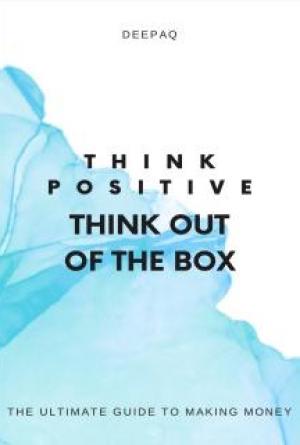The most severe is studying to
concentrate on one process at a time, giving
it your conscious and unconscious attention. If your life is very
traumatic, that just indicates you need the creative time more than ever. You
must share with yourself, or you’ll have nothing to offer others in your
lifetime. Dr. Phil McGraw said, “You can’t give from an vacant cup.”
I can listen to you right now
saying, “When can I probably find out a time to be alone and think about
anything but my issues/problems. There’s so much to do, so much to accomplish,
and not nearly enough time or energy to
do them all. Where do I fit in the time for myself?”
If you come home from a long day of
labor, and then have youngsters wanting your undivided attention, it’s actually
an perfect time here for a little creativity. Playtime with them through
coloring, enjoying with clay-based, and reading are perfect methods to work out
your own creativity. They are also efficient methods to relax. The advantages
to the kids are that you are helping to develop their self-esteem and
self-confidence. Children really like doing things with their mom and dad. Compliment
them generously to help boost their own creativity and self-worth. If you’re
accountable for senior citizens, try some activities, cards, or interests to
connect with them and motivate on your own creative causes, as well as theirs.
Then allow yourself a few minutes
before bed to sit silently and think your own creative thoughts. Relaxation is
a great way to educate the mind to concentrate and focus on your own
creativity. When you go back to your journal, you may be pleased at how
efficiently and proficiently you’ve fixed any issues you’ve experienced. Making
meditation a aspect of your day can make all the big difference in your
feelings and your health.
You’ve discovered that being active,
and yet discovering creativity in your lifetime, is very possible. But there
are other challenges you may have to deal with. Sometimes you might find out
that you have inconsistent objectives, or have not favorably described those
objectives. You might have significant amounts of competition at your
workplace, and you might be puzzled as to how to take advantages of
possibilities you experience are necessary to a better job or more money.
Here’s yet another opportunity to
put your creativity to the process. As with any issue, you must first figure
out it precisely. You cannot progress ahead without knowing exactly what it is
you want. Once you’ve described the objective, it’s a time to set out the
actions to getting that objective. What do you need to get from Point A to
Point B? You need a strategy. Here’s where your creativity can help you again.
Make your strategy, deciding how to get what you want, step-by-step, finish
with a brief time frame if necessary. Then follow your strategy.
Zig Ziglar said, “You can’t hit a
target you cannot see and you cannot see a target you do not have.” It’s important to have a strategy underway, a objective to accomplish, a
road map to what you want. In the lack of clearly described objectives, we
become curiously faithful to performing daily functions of trivia.
Without a certain objective underway
for your daily life and your creativity, you might find out yourself going
along with someone else’s strategy that’s not actually the right one for you.
Go with your own creativity and find out what’s right for you personally.
Yet another opponent of your
creativity is stress. It’s challenging to concentrate on brilliant ideas if
you’re feeling nervous. And while stress is not the perfect set up which to
operate your creative miracle, it can be used to your advantages at periods. Oscar
Wilde said, “The stress is intolerable. I only hope it continues permanently.” You
can use that stress to motivate you ahead and keep you moving.
Other challenges you may experience
are lack of self-confidence or fear of critique. You must remind yourself that
you are a very creative individual. Take actions to understand what you need to
know to develop that creativity and your selfconfidence. As for critique, you
must understand to let it roll off your collar. There will always be so-called
experts in your lifetime, and you must understand the art of overlooking them.
You may even be a bit self-critical
concerning your own abilities. That inner critic is the most severe of all of
them, because that’s the one you listen to all time. This is the conversation
in your ear saying, “What makes you think you can come up with the creative
answer to this problem? Who do you think you are anyway?” It requires some work
to understand how to turn off the inner critic when you’re in the middle of
developing something, but it’s important that you do.
Procrastination is one of the most
severe blockades to your creativity. “As soon as I get some a more time period,
I’ll get to that creative venture.” “I’ll deal with that new venture this
weekend, at night.” “As soon as school is back in and the kids are out of the
way, I’ll get to that exclusive venture.”
You know you’ve done exactly that;
you’ve procrastinated day after day, A week after A week, every month to month.
Yet you never seem to get around to that exclusive venture. Sometimes, you can
actually use one of these opponents of creativity to motivate you. The
well-known “Round Tuit” is just such an progression. It’s a yellow round part
of rubberized, imprinted with “Round Tuit” on one aspect. At once, it was “the
thing” to offer to your procrastinating buddies. They’re always patiently
waiting until they got around to it; well now they had one.
That creative venture, that sign of
a amazing concept, that nugget of creativity continues to sit at the edge of
the mind, mocking you, calling to you. It’s so close, you can almost touch it.
You can almost get your arms on it. But it stubbornly stays just out of reach.
It taunts you, “Leave all that other stuff and come think outside the box with
me!”
Procrastination is one of the
toughest blockades to dispense with, because it seems like a genuine reason.
After all, you’re so active, you got so much to do, and so many individuals
depend on you and requirement your efforts and time. It’s so easy to keep
putting it off, until you never get to it at all.
There are many types of
procrastinators. There are those who delay until the last moment and tell
themselves that they be more effective under stress. Pressure or no stress,
they still don’t accomplish anything.
There are those who either fear
failure or perhaps fear achievements, so they prevent the venture. This team
would rather be thought of as sluggish/lazy than without the necessary
capability to make it occur.
It just seems like you’re being
forced, and no one prefers being forced to do anything. Problems is, you just
don’t experience excitement about doing whatever the venture is. So, you
prevent it as much as you can, giving
reason after reason.
Lastly, there are those who basically
cannot make a decision, thinking erroneously that if they are no choice,
they’re not accountable.
The last blockade that is so
challenging to cope with is that of
perfectionism. You’re never pleased with what you accomplish - it’s
never quite right, it’s not “perfect,” others may not like it, etc. Many
authors experience this problem. They create a few pages, then start the
modifying procedure, thinking it will be simpler than if they patiently waited
until the tale or guide was finished. The issue with that concept is that
you will never get past those first
few pages. You are always stuck in the modifying procedure and you will never
finish at all.
Many individuals get so stuck in the
“perfection” rut, they gradually stop the venture completely. Their thinking is
that if they can’t get it just right, why bother completing it? This is
favorably dangerous to the creative procedure.
Since there is no such things as
perfection, then striving for it is a ineffective desire and a waste of your
creative time. There are societies and groups all over the globe who remind
themselves of their own flaw by purposely including a defect in their art. The
Japanese people call it a “wabi.” Amish blanket makers always consist of a
purposeful defect in their work, to remind themselves that men and women are
not perfect.
In this situation, we must come back
to the childlike model of creativity. Children don’t care if they get something
perfect, they just really like doing it. They just keep on trying, regardless of
how many times they fail to accomplish perfection. Remember time when you were
a kid and did not accomplish something to everyone’s satisfaction. “Just do
your best,” your mom informed you. “All you can do is your best.”
-“There is no failure, except in no
more trying; no defeat, except from within; no impossible hurdle, except our
own natural weak point of objective.” – Anonymous
Chapter 8
Creativity - The First Relative to
Genius
What exactly is the distinction
between the brain of a genius and the brain of an common person? Eileen
Michalko, in his guide Cracking Creativeness, says he believes the
distinction is that prodigies know “how” to think, instead of “what” to think.
This allows them to develop absolutely new ideas and say to themselves that
anything is possible.
That essentially implies that they
look at issues in a different way. They merge ideas, images, and thoughts in a
different way and are able to identify styles on the entire world around them.
They know how to make connections between things, no issue how uncommon or
different. An example of this is when Leonardo DaVinci made the relationship
between the tone of a gong and a flat stone hitting the water, causing waves.
His relationship was that audio also visited in waves.
Another indication of genius is the
capability to think in opposites. An example of this type of thinking would be
the Danish physicist Niel Bohr. In 1928, he declared that it was
possible to think about light as both waves and particles, not however at the
same time.
The capability to think in metaphors
is considered a indication of genius. Aristotle felt that if a individual has
the capability to compare two individual areas of lifestyle and somehow find
out a relationship there, then that individual has a exclusive gift. A
individual of remarkable abilities also concentrates on how to evaluate the
procedure of random creativity. It’s not a issue of why it unsuccessful, but
what exactly did it do?
A individual having genius is
impressive. An example of this was Thomas Edison, who held over 1,000 patents.
In his guide Cracking Creativeness, Eileen Michalko declares that prodigies
generate bulk of ideas because they think with finish assurance. Obviously,
their thoughts are extremely busy; they think all time. And it’s possible for
the rest of us to develop these features as well. It’s simply a issue of
coaching our thoughts to think more with finish assurance.
According to Buckminster Fuller,
“Everyone is created a genius. Society degeniuses them.” Some believe that
genius just seems to be, out of the blue, and that the programmed considering
college can actually take away from a person’s genius. Massive amounts of
information doesn’t actually guarantee genius; it only indicates you have an
outstanding storage capacity. And the best aspect is that you need not be a
genius to be able to think outside the box. And even better news is that we are
able of more than just creative thought; we are able of more genius than we
ever imagined. Charles Baudelaire described genius as “no more than childhood
recaptured at will.”
So, how do you accomplish this feat?
You must re-train the brain to think like a genius. You can do that by
following the above requirements. You must start to think about the world
around you in a different way. Think in opposites, think in metaphors, and
become more effective with your ideas. And when ideas don’t exactly pan out the
way you expected they would, you must ask yourself not why it unsuccessful, but
what did it accomplish, what did it prove?
Want to develop the brain of an
inventor? Search at designs around you and ask yourself how you could get them
to be different. Max Planck, known as the dad of quantum theory, believed that
it was necessary for researchers to have “a stunning user-friendly creativity,
for new ideas are not produced by reduction, but by attractively creativity.”
Even Einstein said his concepts were “free invention of the creativity.” Ezra
Lb said, “Genius…is the capacity to see ten things where the common man
recognizes one and where the man of abilities recognizes two or three, plus the
capability to register that multiple understanding in the material of his art.”
Chapter 9
Brain; Left-side Right-side Brain
“The primary function of your human
body is to carry the brain around.” - Thomas Edison
There is an old joke that says if
the left 50 percent of the brain is prominent in right-handed individuals and
the right 50 percent is prominent in left-handed individuals, then left-handed
individuals are the only ones in their right thoughts.
In the late Sixties, Mark Sperry
released the concept that the left 50 percent of the brain was the systematic,
spoken aspect and the right 50 percent of the brain was the creative, visible
aspect. Between the two sections is the corpus callosum, the plug. Basically,
the two sections connect with each other through this plug. It’s the corpus
callosum that quite basically keeps the right side informed of what the
left-hand is doing.
Each 50 percent of the brain gets
details in a absolutely different way. The left 50 percent of the brain is the conversation
center, where you get the capability to form thoughts and put them into terms.
This is also where factors are put into certain successive or sensible order.
The right 50 percent of the brain
manages motor abilities, instinct, and feelings. It also allows you to be able
to identify and identify images. While the left aspect thinks in terms, the
right aspect recognizes images.
Creative individuals such as
performers, authors, or musicians and singers often make reference to this a
double characteristics. It is possible however to move from one aspect to
another, using both ends. A person can make the move based on the situation in
which he discovers himself to be in. Image a cpa, who makes his/her career
working with numbers: series and series, range after range of numbers.
Obviously, his income depends on his usage of the left aspect of his brain to
outstanding impact. However, if he wants to go dancing at night with his wife,
he must move over to the right aspect of the brain - to the creative aspect -
the aspect that creates it possible for him to know how to dancing.
On the other aspect of the coin, is
the specialist, who creates his residing by artwork amazing scenery or images.
All day long, he paints, showing his abilities in brilliant shades of colors,
lights, and dark areas. In the night, he must pay his bills and balance his
chequebook. So you see the move from the right aspect of his brain, wherein can
be discovered his creativity, over on the left aspect of his brain, wherein can
be discovered his sensible and systematic thinking.
Most humans are created with one
propensity or the other, with influence coming from inherited characteristics,
type of close relatives life, and childhood coaching. There are exclusions,
however. And alter is possible; either aspect can be trained and increased.
One of the most famous illustrations
of this type of change is the tale of Teddy Roosevelt, the twenty-sixth Chief
(President) executive of the United States. As a young boy, he experienced from
asthma and was ill much of time. To be able to develop up his human body, his
dad had a gym built, where Teddy could work out and get over the weak point in
his human body. Later, he became a lawyer and quite a legendary writer of
history and philosophy. Here is proof that a individual can move from one
aspect of the brain to the other, based on their conditions.
Whatever aspect of the brain you
like, will determine your preferences, and will figure out your abilities,
talents, and weak points. It will also impact your career and individual life,
identifying what you do for a living and who you select to have in your
lifetime.
You may observe that changes in your
lifetime can have a certain impact on which 50 percent of the brain you use
most. Shifting way of life and obligations bring about a move in the way you
see things and respond to the changes. So whichever aspect you like, you still
use both ends of the brain and will look for the need to move back and forth,
based on the requirement of when.
Let’s break down the delineation of
the two halves of the brain morecompletely. The left half of the brain controls
the logical, analytical, sequential, rational, linear, verbal, goal-oriented
side of your nature. The right half of the brain controls the intuitive,
spontaneous, emotional, visual, artistic, playful, nonverbal side of your
nature.
Right-brained individuals are super
easy to spot. They fantasize, doodle, and maybe entice. They may select, at the
sporadically, to take jog to nowhere in particular. They may be more conscious
of shades of color, fragrances, and scents and more able to think about
circumstances, specifically the “what if” moments. They are more conscious of
their feelings, as well as the feelings of those around them. They correspond
with others more quickly, knowing their perspective and experiences. Basically,
they’re more friendly and spontaneous.
Left-brained individuals are always
asking questions and wanting solutions to everything. They are generally record
makers and organizers. Their concept of fun may consist of working on crossword
questions and/or fixing mathematical issues. They prefer writing and outlining
to spontaneous outbursts of activity. They’re also more connected to time and
plans, and really like to systematize everything down to the last detail.
They’re more systematic and like to break issues down into the component parts.
Everything you do, everything you
think, everything you experience, and everything you experience are instructed
through the brain, and strained through the left and/or the right aspect.
Every individual has the same
primary devices to use and entice on permanently as Albert Einstein, Louis
Pasteur, Leonardo DaVinci or Hallen Keller. It’s not the size of the brain
that’s important; it’s what you do with yours that matters. The greatest
distinction in our thoughts and those of so-called prodigies is that they are
able to make the changes coming back and forth more quickly and are more
inclined to use both sides of their brain to the best impact.
So, how do you practice the brain to
be more effective? There are a few exercises to help the brain perform the
changes necessary to view the world around you and effectively cope with
whatever conditions you might find out yourself into over the course of your
daily life.
One such work out is something very
easy. As kids, you probably played around with visual dreams. You see one
picture clearly, but if you take a closer look, another picture seems to be
there. The once popular Seeing Eye images are cases of visual dreams. The
double images cause the brain to move back and forth.
Another outstanding work out to
practice the mental abilities are outstanding old-fashioned brainstorming. Here
you must figure out the issue, lay it out in details, and ask yourself what you
really want to accomplish. Then break the issue down into its primary elements.
Smaller pieces are not overwhelming and are simpler to cope with. If it’s
needed, seek expert assistance when necessary. Then think about the most
perfect outcome. How do you see it unfolding in your mind? Make it a attractive
outcome - the most perfect remedy.
Within the problem-solving work out,
you’ll find out yet another set to help you not only fix issues, but to help
you think about and make your creativity.
1. Try seeing the exact reverse of
your issue. Not enough employees at the office? Try imagining public moving
around.
2. Expect the surprising.
3. Forget everything you know about
the issue and start from the begining. This opens up the brain of p







